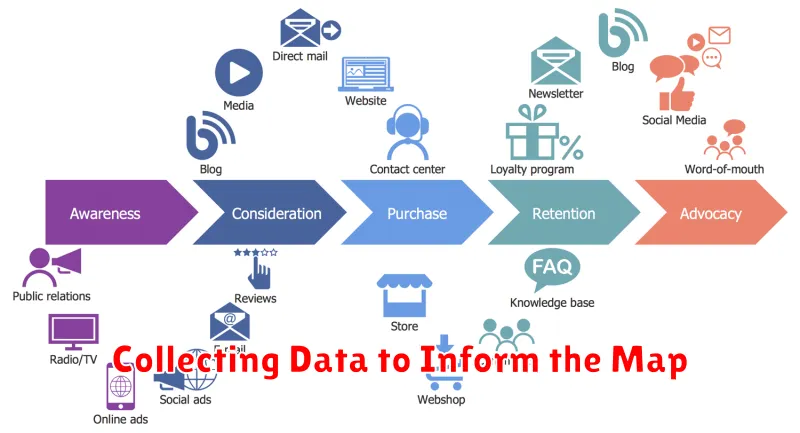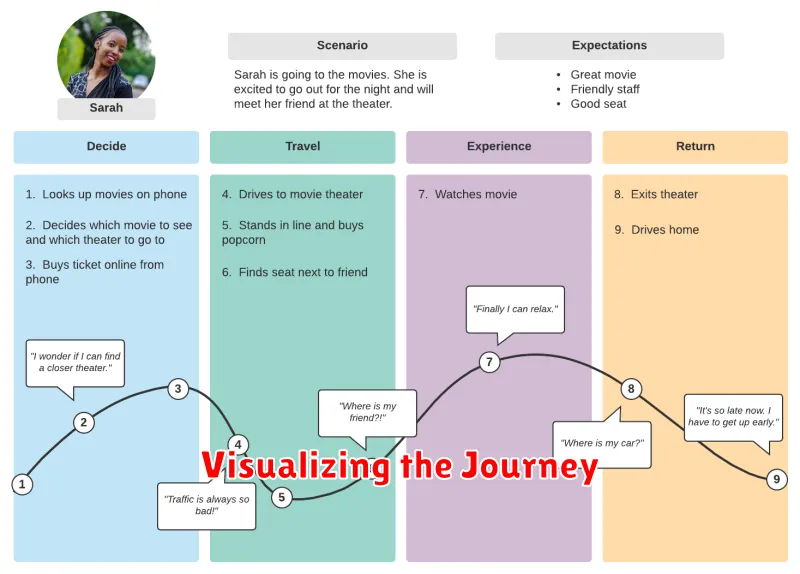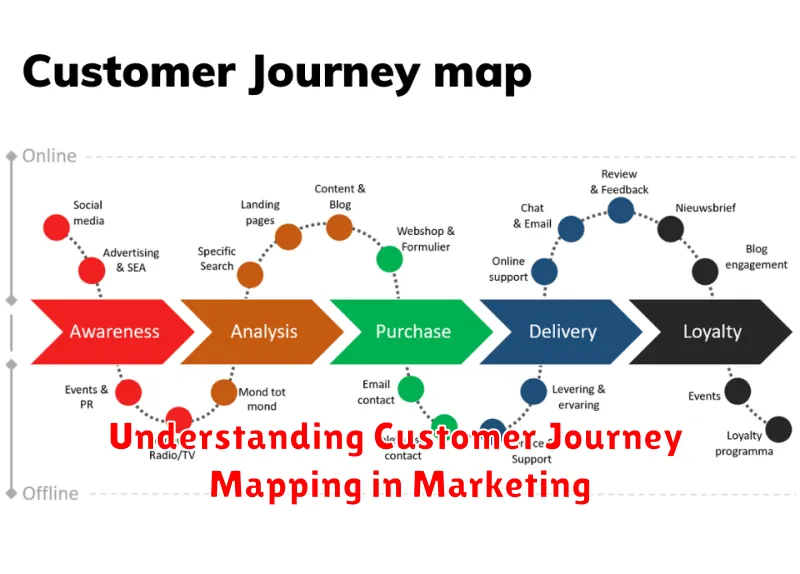In today’s competitive market, understanding the customer journey is paramount to marketing success. Customer journey mapping provides a visual representation of every interaction a customer has with your brand, from initial awareness to post-purchase engagement. By meticulously charting this journey, businesses gain invaluable insights into customer behavior, pain points, and motivations, enabling them to optimize their marketing strategies for maximum impact. This comprehensive understanding of the customer experience is essential for driving customer loyalty, increasing conversions, and ultimately, achieving sustainable business growth. Learning to effectively utilize customer journey mapping in marketing will equip you with the tools to better anticipate customer needs and deliver personalized experiences that resonate.
This article delves into the intricacies of customer journey mapping, providing a practical guide to creating and leveraging these powerful tools. We’ll explore the key stages of the customer journey, discuss different mapping methodologies, and highlight best practices for gathering customer data and translating insights into actionable marketing initiatives. Whether you’re a seasoned marketer or just starting out, understanding the principles of customer journey mapping will empower you to create more effective, targeted, and customer-centric marketing campaigns that drive tangible results. Prepare to unlock the power of customer journey mapping in marketing and transform the way you connect with your audience.
What Is a Customer Journey Map?
A customer journey map is a visual representation of the process a customer goes through in engaging with a company, its products, or services. It illustrates the customer’s experience from initial awareness to post-purchase interaction and beyond.
This map doesn’t just focus on a single transaction. Instead, it encompasses all touchpoints a customer might have with a business, including marketing materials, website visits, sales interactions, customer service experiences, and ongoing product usage.
The primary goal of a customer journey map is to understand the customer’s perspective at each stage of their journey. This includes their needs, motivations, pain points, and emotions. By identifying key moments of truth and areas for improvement, businesses can optimize their processes and deliver more satisfying customer experiences.
Stages of the Customer Journey
The customer journey is typically divided into key stages, each representing a different interaction point between the customer and a brand. Understanding these stages is crucial for effective marketing strategies.
Generally, the customer journey includes the following core stages:
- Awareness: The customer becomes aware of a need or a problem and begins researching potential solutions. This is where brand visibility and educational content are paramount.
- Consideration: The customer evaluates different options available to address their need. Here, detailed product information, comparisons, and reviews play a significant role.
- Decision/Purchase: The customer selects a specific product or service and makes a purchase. A smooth and efficient purchasing process is essential at this stage.
- Retention/Advocacy: After purchase, the focus shifts to building customer loyalty. Excellent customer service, follow-up communication, and loyalty programs are key to fostering long-term relationships and encouraging positive word-of-mouth referrals.
While these stages represent a common framework, the specific journey can vary depending on the industry, product, and target audience. Adapting your marketing efforts to align with each stage of the customer journey is critical for optimizing the overall customer experience and achieving business objectives.
Collecting Data to Inform the Map

Gathering accurate and relevant data is crucial for constructing a meaningful customer journey map. This data informs every stage of the map, ensuring it reflects the true customer experience. Several methods can be employed to collect this valuable information.
Data Collection Methods
Existing Data Analysis: Leverage existing data sources such as website analytics, CRM systems, and marketing automation platforms. This data can reveal customer behavior patterns, purchase history, and demographics.
Customer Interviews: Conduct in-depth interviews with customers to gain qualitative insights into their experiences, motivations, and pain points. These interviews provide rich, personalized data that goes beyond quantitative metrics.
Surveys and Questionnaires: Distribute surveys and questionnaires to collect structured data from a larger customer base. This approach is useful for quantifying customer satisfaction, identifying common issues, and tracking trends.
Focus Groups: Facilitate focus group discussions with representative customer segments to explore specific aspects of the customer journey and gain diverse perspectives.
Visualizing the Journey

A customer journey map is a visual representation of the process a customer goes through to achieve a goal with your company. This could be anything from making a purchase to resolving a customer service issue.
Visualizing this journey is crucial for several reasons. It allows businesses to understand the customer’s perspective at each touchpoint. This understanding helps identify pain points, areas for improvement, and opportunities to enhance the overall customer experience.
There are various ways to visualize the journey, ranging from simple timelines to more complex diagrams. A common approach involves outlining the stages of the journey, such as awareness, consideration, decision, and post-purchase. Within each stage, specific touchpoints are identified, along with the customer’s actions, thoughts, and emotions at each point.
By mapping this journey visually, businesses can gain a holistic understanding of the customer experience and identify key areas for optimization.
Identifying Friction Points
A crucial step in customer journey mapping is identifying friction points. These are any instances where customers encounter obstacles, experience frustration, or have negative interactions that hinder their progress toward a desired outcome.
Friction points can manifest in various forms, from complex website navigation to lengthy checkout processes. Pinpointing these pain points is essential to streamlining the customer journey and enhancing overall satisfaction.
Methods for identifying friction points include analyzing customer feedback surveys, reviewing website analytics, conducting user testing, and actively monitoring social media for complaints and concerns. Pay close attention to areas with high drop-off rates or negative feedback.
By systematically addressing these friction points, businesses can improve conversion rates, foster customer loyalty, and ultimately, drive revenue growth.
Using the Map to Improve Conversions
A customer journey map, once created, isn’t meant to sit idle. It’s a dynamic tool used to identify areas for improvement and ultimately boost conversions. By analyzing each touchpoint, marketers can pinpoint friction points and opportunities to enhance the customer experience.
Analyzing Touchpoints: Carefully examine each interaction a customer has with your brand. Look for pain points such as confusing navigation on your website, a complicated checkout process, or unhelpful customer service interactions. These are areas ripe for optimization.
Implementing Changes: Based on your analysis, implement changes designed to streamline the customer journey. This could involve simplifying forms, providing clearer calls to action, or offering more self-service options. Even small changes can make a significant difference.
Measuring Results: Track key metrics after implementing changes to gauge their effectiveness. Monitor conversion rates, bounce rates, customer satisfaction scores, and other relevant data to determine the impact of your optimization efforts. This data-driven approach ensures your map remains a valuable asset.
Updating the Map as Customer Behavior Evolves
Customer journey maps are not static documents. Customer behavior is constantly evolving due to various factors such as emerging technologies, shifting economic conditions, and changing cultural trends. Therefore, it is crucial to regularly review and update your customer journey map to ensure its continued relevance and effectiveness.
The frequency of updates depends on the dynamism of your industry and the specific customer segment being analyzed. Some businesses may need to update their map quarterly, while others may find an annual review sufficient. Regardless of the frequency, establish a structured review process.
This process should involve collecting fresh data from various touchpoints, including customer feedback surveys, website analytics, and sales data. Analyze this data to identify any significant shifts in customer behavior and adjust the map accordingly.

